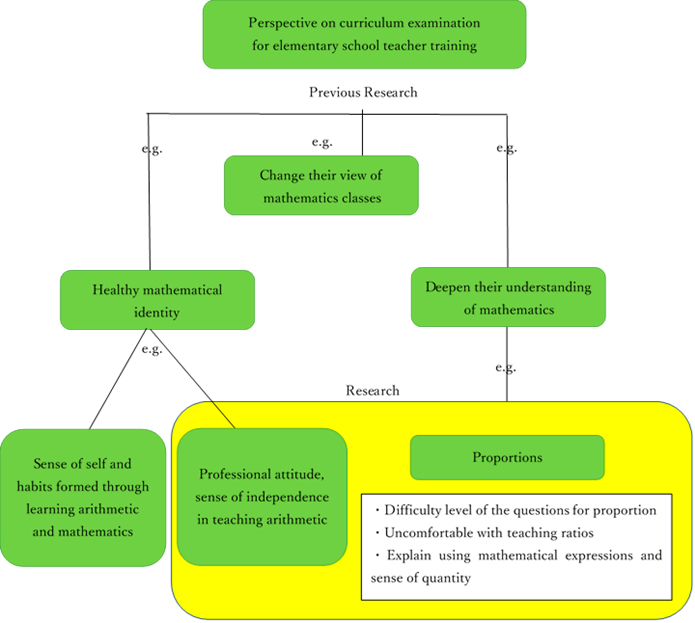Understanding “proportion” and mathematical identity
A study of Japanese elementary school teachers
DOI:
https://doi.org/10.31129/LUMAT.10.2.1662Keywords:
elementary teacher training, mathematical identity, proportionAbstract
Studies have found that problems exist with respect to elementary school teachers’ understanding of proportions and their knowledge of the appropriate methods for teaching the concept. This study aims to help aspiring elementary school teachers form a healthy mathematical identity and deepen their understanding of mathematics. This quantitative study employed the descriptive-research survey method, surveying 86 students in 2019 and 110 students in 2021. Data were gathered using a survey questionnaire designed by Kumakura et al. (2019), with minor modifications made by the author. A major finding was that many students want to become elementary school teachers but are uncomfortable with the concept of proportions. Another important finding is that it is a challenge for students who wish to become elementary school teachers at a traditional school (University A) to hone their ability to use mathematical expressions and develop their sense of quantity. The findings suggest that it is important to help such students understand the content and refine their expressions.
References
Aguirre, M. F., Mayfield-Ingram, K., & Martin, B. D. (2013). The impact of identity in K-8 mathematics learning and teaching: Rethinking equity-based practices. National Council of Teachers of Mathematics.
Bishop, J. P. (2012). “She’s always been the smart one. I’ve always been the dumb one”: Identities in the mathematics classroom. Journal for Research in Mathematics Education, 43(1), 34–74. https://doi.org/10.5951/jresematheduc.43.1.0034
Higuchi, K. (2005). A study of college students’ understanding of ‘ratio.’ In Proceedings of the Conference on Mathematics Education, Vol. 38 (pp. 795–796). Japan Society of Mathematical Education.
Howe, C. (2013). Ratio and proportion: Research and teaching in mathematics teachers’ education (pre- and in-service mathematics teachers of elementary and middle school classes). An International Journal of Teachers’ Professional Development, 17(4), 577–579. https://doi.org/10.1080/13664530.2013.793059
Kambara, K. (2019). A study on the understanding of proportions by students who want to be elementary school teachers: Implications for teaching ‘proportions.’ Proceedings of the Annual Meeting of the Japanese Society for Science Education 43, 181–184.
Kambara, K. (2021, September 20–22). A survey study on the mathematical identity of prospective teacher students—Targeting second-year college students before learning pedagogy [Paper presentation]. 53rd Research Conference of Japan Academic Society of Mathematics Education
Kumakura, K., Kunimune, S., & Matsumoto, S. (2019). A survey study on the understanding of proportion among junior and senior high school students. Bulletin of the Center for Educational Practice, (29), 80–89. Shizuoka University.
Monteiro, C. (2003, July 13–18). Prospective elementary teachers’ misunderstandings in solving ratio and proportion problems [Paper presentation]. 27th International Group for the Psychology of Mathematics Education Conference Held Jointly with the 25th PME-NA Conference. International Group for the Psychology of Mathematics Education, Honolulu, HI, United States.
Nishi, S. (2017). A study of identity formed through mathematics education: A presentation of the hypothesis of identity identified through habit. Journal of the National Association for Mathematics Education, 23(2), 117–128.
Olanoff, D. E., Lo, J.-J., & Tobias, J. M. (2014). Mathematical content knowledge for teaching elementary mathematics: A focus on fractions. The Mathematics Enthusiast, 11(2), 267–310. https://doi.org/10.54870/1551-3440.1304
Rabe, J., & Wenger, E. (1993). Learning embedded in situations. (F. Saeki, Trans.). Industrial Books.
Sfard, A., & Prusak, A. (2005). Telling identities: In search of an analytic tool for investigating learning as a culturally shaped activity. Educational Researcher, 3(4), 14–22. https://doi.org/10.3102/0013189X034004014
Takahashi, T. (2020). What we want from future arithmetic and mathematics teachers: What we have seen through identity research. Joetsu Mathematics Education Research (35), 1–28. Mathematics Department, Joetsu University of Education.
Yoshizawa, M. (2019). University students who don’t understand ‘%.’ Kobunsha.

Downloads
Published
How to Cite
Issue
Section
Categories
License
Copyright (c) 2022 Kazuyuki Kambara

This work is licensed under a Creative Commons Attribution 4.0 International License.









